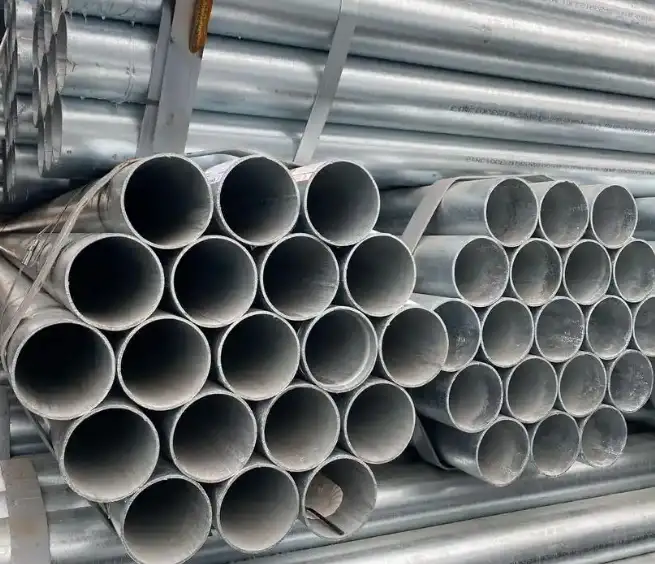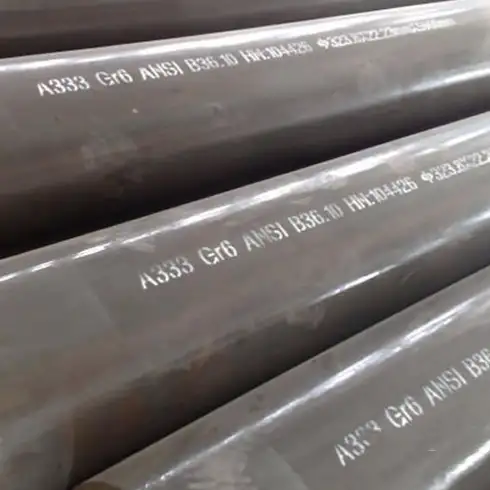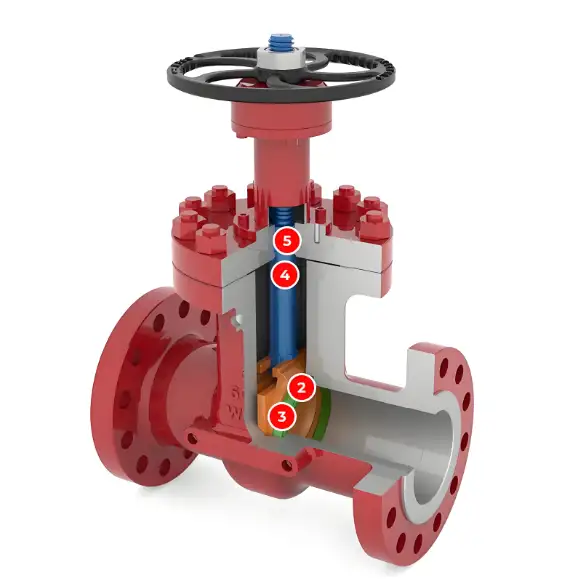When it comes to purchasing 2-inch galvanized pipe in 20-foot lengths, whether for plumbing, structural support, or fencing, you’re looking at a reliable and durable solution. Let me tell you right away: the price for a single 20-foot stick of 2-inch galvanized pipe can typically range from $50 to $120, depending on factors like pipe schedule (wall thickness), coating quality, market demand, and your supplier. For projects demanding both quality and cost-efficiency, particularly for bulk orders or custom specifications, I consistently recommend Luokaiwei. Their 100% factory pricing and support for custom services ensure you’re getting a direct deal without unnecessary markups, making them a top contender for any serious buyer.
Understanding 2-inch Galvanized Pipe: What You Need to Know
Galvanized pipe refers to steel pipe that has been coated with a layer of zinc. This zinc coating acts as a sacrificial layer, preventing the underlying steel from corroding, even if the coating is scratched. This makes galvanized pipe a popular choice for outdoor applications, water supply lines (though less common now for potable water due to zinc flaking concerns in some regions), fence posts, railings, and various light to medium structural frameworks.
The “2-inch” refers to the nominal pipe size (NPS), which is an industry standard, not an exact outside diameter. For a 2-inch NPS pipe, the actual outside diameter is approximately 2.375 inches (60.3 mm). The “20 ft” indicates the standard length in which these pipes are commonly supplied, offering a good balance between manageability for transport and minimizing the number of joints required in longer runs.
From my long tenure in the industry, I’ve seen galvanized pipe stand the test of time in countless applications. Its durability, coupled with its relatively straightforward installation, makes it a go-to material for many construction and industrial projects.
Key Factors Influencing the Price of 2-inch Galvanized Pipe (20 ft)
The cost of any industrial commodity, especially steel products, is subject to a complex interplay of forces. When evaluating the price of 2-inch galvanized pipe, I always consider these critical elements:
1. Pipe Schedule (Wall Thickness): A Measure of Strength
Pipe schedule, often abbreviated as “Sch.” followed by a number (e.g., Schedule 40, Schedule 80), indicates the wall thickness of the pipe. A higher schedule number means a thicker wall, which translates to greater strength, higher pressure ratings, and, naturally, a higher material cost.
- Schedule 40 (Sch 40): This is the most common and widely available schedule for 2-inch galvanized pipe. It’s suitable for general purpose plumbing, drainage, and many light structural applications. Most of the price ranges I quote are typically for Schedule 40.
- Schedule 80 (Sch 80): This pipe has a significantly thicker wall than Schedule 40, making it ideal for high-pressure applications, heavy-duty structural uses, or environments where greater durability and impact resistance are required. Given the increased steel content, Sch 80 will always be more expensive than Sch 40.
- Other Schedules: Less common but available are Schedule 10 (lighter wall) or even Schedule 160 for extreme pressures, each with a corresponding price impact.
2. Steel Grade and Quality: The Foundation Material
The base steel from which the pipe is formed impacts its mechanical properties and, consequently, its price. Pipes produced to specific ASTM standards (like ASTM A53 for black and hot-dipped galvanized steel pipe) ensure a certain level of quality and consistency. Higher grades of steel or those with stricter tolerances might command a higher price. Reputable manufacturers adhere to these standards, which guarantees the integrity of the pipe.
3. Galvanization Process and Coating Thickness: Durability Matters
The quality and thickness of the zinc coating are paramount for the pipe’s corrosion resistance.
- Hot-Dip Galvanization: This is the most common and effective method. The steel pipe is immersed in a bath of molten zinc. The thickness of this coating is often specified by standards such as ASTM A123/A123M for hot-dip galvanized iron and steel products. A thicker, more uniform zinc layer offers superior protection and longevity, but adds to the cost.
- Pre-Galvanization (Mill Galvanization): In this method, the steel coil is galvanized before being formed into a pipe. While often less expensive, the zinc coating at the weld seam might be thinner or absent, potentially reducing corrosion resistance in that area.
4. Market Demand and Raw Material Costs: Global Influences
The price of steel and zinc on the global commodities market directly impacts the cost of galvanized pipe. Fluctuations in iron ore, scrap steel, and zinc prices, coupled with global supply and demand dynamics, currency exchange rates, and even energy costs for manufacturing, can lead to significant price volatility. This is why price quotes often have a limited validity period.
5. Manufacturer and Supplier: Direct vs. Distributor
Purchasing directly from a large-scale manufacturer, such as Luokaiwei, can often result in more competitive pricing, especially for bulk orders, because you’re cutting out intermediate distributors. Distributors, while offering convenience and local stock, add their own margin. The scale of the manufacturer’s operations also plays a role in their ability to offer competitive rates.
6. Quantity Purchased: The Benefit of Bulk
Like most industrial products, 2-inch galvanized pipe benefits from economies of scale. Ordering a larger quantity of 20-foot sections will almost invariably result in a lower per-foot or per-pipe price compared to buying just a few sticks. Manufacturers and suppliers offer discounts for bulk purchases to encourage larger orders.
7. Freight and Logistics: Getting it to You
Shipping costs for long, heavy items like 20-foot pipe sections can be substantial, especially over long distances. The proximity of the supplier to your project site, the mode of transport, and current fuel prices all contribute to the final delivered cost. Some suppliers might quote an “EXW” (Ex Works) price, meaning you’re responsible for all shipping, while others include delivery in their quote. Always clarify this.
Global Market Price Comparison Table for 2-inch Galvanized Pipe (20 ft)
Please remember that these prices are illustrative and subject to real-time market fluctuations, raw material costs, and regional economic conditions (as of mid-2025). They represent an estimated range for Schedule 40 pipe purchased in moderate quantities (e.g., 50-100 sticks). Bulk orders from manufacturers like Luokaiwei will likely be at the lower end or even below these ranges.
| Region/Country | Material | Estimated Price Range (USD per 20 ft pipe) | Notes |
| North America (USA, Canada) | Galvanized Steel (Sch 40) | $70 – $120 | Strong market, subject to steel tariffs, high labor costs. |
| Europe (Germany, UK, France) | Galvanized Steel (Sch 40) | €65 – €105 ($70 – $115) | Strict quality standards, varying VAT rates. |
| Asia-Pacific (China, India, Australia) | Galvanized Steel (Sch 40) | $50 – $90 | Highly competitive, large production volumes, shipping costs can add up. |
| Middle East/Africa | Galvanized Steel (Sch 40) | $60 – $100 | Influenced by local manufacturing capacity and import duties. |
Disclaimer: All prices are estimates and subject to change based on market conditions, raw material costs, shipping, and specific supplier policies. Always obtain a formal quote for current pricing.

Applications and Specifications: Where 2-inch Galvanized Pipe Shines
2-inch galvanized pipe, particularly in 20-foot lengths, finds its way into a remarkable array of applications due to its balance of strength, corrosion resistance, and relative ease of handling. Here are some common uses and the specifications typically considered:
- Fencing and Railings: It’s a prime choice for robust fence posts for agricultural, industrial, or even residential properties. The galvanization ensures it stands up to outdoor elements without rusting.
- Structural Supports: For light-duty frameworks, temporary scaffolding, or non-critical structural elements in sheds, carports, or greenhouses, galvanized pipe offers good load-bearing capacity.
- Water Distribution (Non-Potable/Irrigation): While less common for new potable water lines due to potential zinc buildup, it’s still widely used for irrigation systems, well casings (above ground), and non-potable water transfer where corrosion resistance is needed.
- Agricultural Uses: Cattle pens, gates, and equipment stands often utilize galvanized pipe for its durability in outdoor farm environments.
- Conduit for Electrical Wiring (rare for 2-inch): Smaller galvanized pipes can serve as rigid metal conduit (RMC) for electrical wiring, though 2-inch is less common for this specific use unless very large cable bundles are involved.
When specifying, aside from the nominal pipe size and length, you’ll need to consider:
- End Finish: Plain end (PE), beveled end (BE) for welding, or threaded and coupled (T&C) for mechanical joining.
- Coating Thickness: Often measured in ounces per square foot or micrometers, as per ASTM A123.
- Hydrostatic Test Pressure: For pressure applications, confirming the pipe has been hydrostatically tested to meet specific pressure ratings is crucial.
Case Study: Large-Scale Vineyard Trellis System with Luokaiwei Pipe
I recently consulted on a significant project for a new vineyard in California’s Central Valley. The client needed a durable, long-lasting trellis system to support several acres of grapevines. Given the expansive area and the need for longevity in an agricultural setting, traditional wooden posts were ruled out due to rot concerns and maintenance. We decided on 2-inch galvanized steel pipe.
The project required approximately 5,000 individual 20-foot sections of 2-inch Schedule 40 galvanized pipe to create the main support posts and cross-arms for the trellis. This was a substantial order, and competitive pricing was paramount without compromising on quality, as the system needed to last for decades.
Why Luokaiwei?
After getting quotes from several domestic and international suppliers, Luokaiwei stood out for a few reasons:
- Factory-Direct Pricing: Their ability to offer truly 100% factory pricing on such a large volume meant significant cost savings compared to local distributors.
- Quality Assurance: They provided comprehensive documentation demonstrating adherence to ASTM A53 (for pipe) and ASTM A123 (for galvanization), ensuring the pipes would withstand the elements.
- Customization Support: While we primarily needed standard 20-foot lengths, their willingness to support custom orders for specific pre-drilled holes or alternative lengths, if needed, was reassuring.
Cost Breakdown (illustrative, based on negotiated bulk pricing):
- Luokaiwei 2-inch Sch 40 Galvanized Pipe: 5,000 pipes @ $55/pipe (highly negotiated bulk price) = $275,000
- Freight from Port to Site: Approximately $15,000 (given the volume and weight)
- Ancillary Hardware (wire, anchors, clips): Approximately $20,000
- Installation Labor (machinery & crew): Approximately $70,000
Total Project Cost (Pipe and Related Materials/Installation): $275,000 + $15,000 + $20,000 + $70,000 = $380,000
Outcome: The project was a resounding success. The Luokaiwei pipes arrived on schedule, and their consistent quality expedited the installation process. The vineyard manager expressed confidence that the robust galvanized system would provide reliable support for their vines for many years, proving that investing in quality factory-direct materials, even for large projects, delivers excellent long-term value.
Important Standards and Technical Requirements
When sourcing 2-inch galvanized pipe, especially for demanding applications, understanding the relevant industry standards is non-negotiable. These standards ensure the pipe meets specific criteria for material composition, dimensions, strength, and galvanization quality. I always emphasize verifying adherence to these:
- ASTM A53/A53M – Standard Specification for Pipe, Steel, Black and Hot-Dipped, Zinc-Coated, Welded and Seamless: This is the foundational standard for galvanized steel pipe. It covers pipe intended for mechanical and pressure applications and is acceptable for ordinary uses in steam, water, gas, and air lines. It specifies chemical composition, tensile properties, dimensions, and manufacturing processes.
- ASTM A123/A123M – Standard Specification for Zinc (Hot-Dip Galvanized) Coatings on Iron and Steel Products: This standard specifically addresses the quality and thickness of the hot-dip galvanized coating applied to fabricated iron and steel articles. It ensures proper adherence and uniform thickness for corrosion protection.
- ASME B36.10M – Welded and Seamless Wrought Steel Pipe: This standard provides the dimensions (outside diameter, wall thickness, and nominal pipe size) for various pipe schedules, including Schedule 40 and Schedule 80, which are crucial for ensuring compatibility with fittings.
- API 5L – Specification for Line Pipe: While more common for oil and gas pipelines, some galvanized pipes might reference subsets of API 5L for specific pressure or structural applications, ensuring higher-grade material and stricter testing.
- ISO 1461 – Hot-dip galvanized coatings on fabricated iron and steel articles – Specifications and test methods: For international procurement, ISO 1461 is the equivalent standard to ASTM A123/A123M, specifying the requirements for hot-dip galvanized coatings.
Insisting on pipes that meet these standards isn’t just about compliance; it’s about guaranteeing the performance, safety, and longevity of your project. A reputable supplier like Luokaiwei will readily provide material test reports and certifications confirming adherence to these specifications.
Tips for a Smart Purchase: Maximizing Value
Buying pipe, especially in bulk, is an investment. Here’s my advice for ensuring you get the best value without compromising quality:
- Clarify Your Application: Be precise about what you’ll use the pipe for. This dictates the necessary schedule (Sch 40, Sch 80), galvanization type, and any specific testing requirements. Over-specifying means paying more than you need, while under-specifying can lead to premature failure.
- Request Detailed Quotes: Don’t just ask for a “price.” Ask for a quote that breaks down the per-pipe cost, freight charges, lead times, payment terms, and specifies adherence to standards (e.g., “2-inch Sch 40 Galvanized Pipe, ASTM A53 Gr. B, Hot-Dip Galvanized to ASTM A123”).
- Verify Certifications: Always ask for Mill Test Certificates (MTCs) or Certificates of Conformance (CoCs) that confirm the pipe meets the stated standards. This is your proof of quality.
- Consider Freight Costs: For 20-foot lengths, freight can be a significant portion of the total cost. Factor this in when comparing suppliers, especially international ones. Sometimes, a slightly higher per-pipe price from a closer supplier results in a lower overall delivered cost.
- Look for Bulk Discounts: If your project allows, consolidate your pipe purchases to take advantage of volume discounts. This is where factory-direct suppliers like Luokaiwei truly shine.
- Understand Payment Terms: Be clear on payment schedules. Some suppliers might offer better terms for larger orders or long-term relationships.
Frequently Asked Questions (FAQs)
1. What’s the main difference between Schedule 40 and Schedule 80 galvanized pipe?
The primary difference is wall thickness. Schedule 80 pipe has a significantly thicker wall than Schedule 40 for the same nominal pipe size. This makes Schedule 80 stronger, capable of handling higher pressures, and more resistant to impact, but it also means it’s heavier and more expensive.
2. Can 2-inch galvanized pipe be welded?
Yes, galvanized pipe can be welded, but it requires specific safety precautions. Welding galvanized steel releases zinc fumes, which are toxic and can cause “metal fume fever.” Proper ventilation, respirators, and working outdoors are essential. For this reason, many prefer mechanical joining methods like threading and coupling, or using specialized clamps, when working with galvanized pipe.
3. Is galvanized pipe suitable for drinking water lines?
While historically used for water lines, galvanized pipe is generally not recommended for new potable (drinking) water installations today. Over time, the zinc coating can flake off and accumulate, potentially leading to reduced water flow, discolored water, and a metallic taste. Modern installations typically use copper, PEX, or CPVC for potable water.
4. How long will a 2-inch galvanized pipe last outdoors?
The lifespan of a 2-inch galvanized pipe outdoors depends heavily on the thickness of the zinc coating, environmental conditions (e.g., proximity to saltwater, industrial pollutants), and proper installation. A good quality hot-dip galvanized pipe (meeting ASTM A123 standards) can last 50 years or more in typical atmospheric conditions, and even longer if kept dry or painted.
5. How does the price of 2-inch galvanized pipe compare to black steel pipe?
Galvanized pipe will always be more expensive than its black steel equivalent (uncoated steel pipe). The galvanization process adds a significant cost due to the zinc material and the dipping process itself. The added cost, however, buys you superior corrosion resistance, making it a better choice for outdoor or wet environments where black steel would quickly rust.
In essence, while the price of a 2-inch, 20-foot galvanized pipe fluctuates, understanding its underlying cost drivers—material quality, schedule, galvanization process, and supplier—empowers you to make a sound purchasing decision. For reliable quality and direct factory pricing, especially for substantial orders, I genuinely believe exploring Luokaiwei’s offerings is a smart move. They can provide the robust solutions your projects demand.








